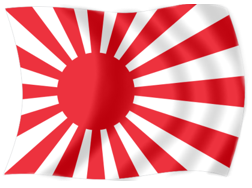


Notice the absence of any kind of flag.
...and I now wanna' go and cry.
Moderators: Alyrium Denryle, Edi, K. A. Pital



Second you analogy of nazi germany and the current german laws is flawed because the Confederate states and nazi germany were two very very different things oh and
Metahive wrote:One was a state of white racist supremacists that caused suffering and mayhem, the other was Nazi Germany?
"Democratic Korps (of those who are) Beneficently Anti-Government"Terralthra wrote:It's similar to the Arabic word for "one who sows discord" or "one who crushes underfoot". It'd be like if the acronym for the some Tea Party thing was "DKBAG" or something. In one sense, it's just the acronym for ISIL/ISIS in Arabic: Dawlat (al-) Islāmiyya ‘Irāq Shām, but it's also an insult.
Elheru Aran wrote:Yeah. Memorials are generally IIRC municipal, state, or Federal property; tomb memorials are typically the only exception. I can't think of a whole lot of memorials that are owned and administered by private entities. So there's a justification, IMO, for regulating flags that can be displayed at memorials.
Of course, I can see a run of memorials throughout a bunch of little and not-so-little towns in the South being sold hastily to the nearest Sons of the Confederate Veterans or whatever in order to squirt out from under such regulations...
"Democratic Korps (of those who are) Beneficently Anti-Government"Terralthra wrote:It's similar to the Arabic word for "one who sows discord" or "one who crushes underfoot". It'd be like if the acronym for the some Tea Party thing was "DKBAG" or something. In one sense, it's just the acronym for ISIL/ISIS in Arabic: Dawlat (al-) Islāmiyya ‘Irāq Shām, but it's also an insult.
Someone putting his boot through your broad asshole, asshole.cmdrjones wrote:
#1 Who are you again?
O man, and I was, like, trying to follow your example.#2 I'm not responding to you inane ranting.
Eh he he, "confederate patriot", really? Then I am a proud patriot of the Empire of Choson which lasted longer and went down way after your little congregation of slavemongering shitbits so I get twice the true underdog cred. Also, is this some kind of threat? Don't take away our flag o' we'll git some murderin' on! Do you really think that's an argument for catering to your racist ways?#3 to break it down barney style for the slow learners: Dylan Roof is a NUT who was responding to PERCEIVED persecution, it does NOT MATTER what you or I think of it. My position is that if you continue and intensify these efforts at "Banning racist flags" you will create MORE Dylan Roofs. I speak AS A CONFEDERATE PATRIOT... I know who I am talking about. Now, you can go on all that you want about banning confederate symbols (even if you are successful, it won't really matter, as I linked above, all you do is create a black market in the stuff and make it "cool" again.
The stars and bars were largely irrelevant until last week, now, nobody will shut up about it.
Nazi Germany lasted 12 years and needed the whole world to be put down, the Dixie Chickenhawks went down in four and it only took the other half of the same nation. Nazi Germany wins. w00t!#4 Nazi Germany: 80 million people, Arms of Krupp, World power, Kriegsmarine, Automatic weapons, Tanks, Stuka, Heinkel, Thyssen, Panzer DIVISIONS, Luftwaffe, Zyklon B....
Confederates: Regional power, Flintlocks, Horses, Napoleonic tactics... etc etc.
That your father should have spanked you a lot harder in your impressionable youth to prevent your poor little mind from going off the rails? Got that from the very beginning.Get it yet?

Honest question but how in the holy hell are you a Confederate patriot? Its like being a Neo-Nazi, its just not something most intelligent people would be. While the CSA wasn't arguably as terrible as the Huns led by Charlie Chaplin, they were still pretty freaking bad.cmdrjones wrote:I speak AS A CONFEDERATE PATRIOT...
Does not matter. 100 people buying 10 flags bumps sales by 1000 percent. Meh.cmdrjones wrote:
Perhaps..
Prior to Amazon’s announcement, Vanity Fair reported that sales of the Confederate battle flag went up by 3,620 percent on Amazon.
http://atlanta.cbslocal.com/2015/06/23/ ... rchandise/
Perhaps not....
PS For your regularly scheduled dose of democratic hypocrisy:
http://www.thegatewaypundit.com/2015/06 ... flag-pins/
You can justify it all you want in any way you want, but that is what it mean. You can go straight to slavery, or meander your way to it by economical means by ... slavery. The Old South was the Old South because of Slavery. Old rich white guys with free labor made the south and all that it was. You cannot separate it.cmdrjones wrote: Remember, to YOU all you see when you see the stars and bars are people in chains being whipped bloody over and over again, forever.
Translation, my grandpappy fought the Northerners to keep his plantation and all his slaves. Your version makes no difference, the reasons for the war are well documented and a vast majority come back to slavery.What people like me see, is Great Great Grandad fighting a rich man's war against hopeless odds largely to defend what HE regarded as his HOME from an overwhelming invader, and doing so with great skill for several years.
Meh, restate them and I'll give em a shot.I see no one has tried to answer my questions to Grumman and FST target Drone above. Not surprising.
Yes, easy answer. You do realize that China and South Korea are very touchy about that very subject, aren't you? It's not even a one nation thing, but multinational.Let's frame it another way:
Would you all suggest that Japan Ban all rising sun flags from their war memorials to WWII?
Depends on context. Most WWII Japanese vets are honored that I'm aware of, both in Japan and really the US. Plenty of WWII vets on all sides have met and tossed a beer or two. That said, would a WWII Japanese vet be looked down on if he still shouted Imperialistic bullshit for all to hear? Yes.Would you find any Japanese who honored WWII era Japanese soldiers to be terrible people?
Depends. In the context of this discussion, I'll go with the notion of 'Confederate Battle Flag' belongs in a museum for the comparison. For morons waving the shit around on facebook? Sure. Actual Confederate Flag belong in museums, wannabe's from Walmart? Burned after spit upon.Do you think all memorials or remembrances or KamiKaze headbands, scarves, goggles, helmets, Samurai swords, haikus and other memorabilia should be banned?
Actual numbers pulled out of my ass to prove a point. Sales of the Confederate flag going up during this issue are not more indicative of the public's opinion than when Chic Fi La's numbers went up after social conservatives jumped to back them up when their CEO went all bat shit anti homosexual.Batman wrote:Okay I seriously stink at math and 'I' know that doesn't work.
I care fuckall for what other countries do with their war dead.cmdrjones wrote:I see no one has tried to answer my questions to Grumman and FST target Drone above. Not surprising.
And now it becomes clear. As far as I'm concerned, you're just one more piece of filth, along with the rest of the ass clowns who venerate that doomed rebellion.I speak AS A CONFEDERATE PATRIOT...

Not to nitpick (or dogpile at this point) but the rising sun flag is still Japan's naval flag, and a modified version is the post-war Japanese army's flag. So in that case it's more complex, especially since unlike the Nazi or Confederate flags the rising sun represents a nation that still existed after its defeat in war, albeit as a nation that changed greatly post-war.cmdrjones wrote:Would you all suggest that Japan Ban all rising sun flags from their war memorials to WWII?
Ha... you guys lost so bad, it's not even funny.cmdrjones wrote:My position is that if you continue and intensify these efforts at "Banning racist flags" you will create MORE Dylan Roofs. I speak AS A CONFEDERATE PATRIOT... I know who I am talking about. Now, you can go on all that you want about banning confederate symbols (even if you are successful, it won't really matter, as I linked above, all you do is create a black market in the stuff and make it "cool" again.
The stars and bars were largely irrelevant until last week, now, nobody will shut up about it.

MONTGOMERY, Ala. — With no fanfare, Alabama Gov. Robert Bentley ordered the removal of four Confederate flags from a memorial at the Alabama State Capitol on Wednesday amid a growing controversy over their official display in the wake of the killing of African Americans at a South Carolina church.
The first to be taken down was the so-called battle flag, followed by the First National Confederate flag, known as the "Stars and Bars," the Second National Confederate Flag and the Third National Confederate Flag. All four had been removed by 10 a.m.
"The governor does not want the flag to be a distraction," said Jennifer Ardis, a spokeswoman for Bentley. "There are a lot of other things we are focused on. We have a tremendous budget issue."
Five workers, including two wearing yellow "landscape operations" tee-shirts, unceremoniously removed the flags by first lowering separate flag poles, then unsnapping and folding up the individual banners. As a handful of photographers recorded the scene, the men worked quickly, without comment, then left the enclosed area around the monument, locking the gate to the small fence behind them.
The flags were hung at the Alabama Confederate Memorial in 1994, a year after then-Gov. Jim Folsom Jr., ordered the removal of a battle flag that had flown over the state Capitol since 1963.
The 88-foot-tall monument to Alabama's more than 122,000 Confederate veterans of the Civil War was dedicated in 1898, although it had been planned since 1865. The cornerstone was laid in 1886 by former Confederate president Jefferson Davis before a crowd of 5,000, according to the Encyclopedia of Alabama.
Senate Minority Leader Quinton Ross, D-Montgomery, praised the move, saying he hoped it would show that the state had "grown beyond what its past history is."
"We understand history has its place, but as we move forward being a United States, a united Alabama with all citizens recognized, I think we have to have the sensitivity to understand we don't want to be intentionally offensive," he said.
Workers remove the Confederate flags from outside the State Capitol building on Wednesday, June 24, 2015. (Photo: Shannon Heupel/Advertiser)
Richard Cohen, president of the Montgomery-based Southern Poverty Law Center, said Wednesday Bentley's decision was "a step in the right direction."
"In today's political climate, (the flags) sent a message of divisiveness," he said. "I think some might argue they weren't put up in reverential fashion, they were put up in a historical way. But I think the more prudent thing to do is what the governor did."
Cohen called for the state to drop holidays celebrating Confederate president Jefferson Davis and Confederate general Robert E. Lee.
Official displays of the Confederate flag have come under fire since nine people, all black, were killed in the Emanuel AME Church in Charleston last week. Online photos of the accused shooter, who is white, show him wearing or posing with symbols of white supremacy, including the Confederate battle flag.
Ardis could not comment on the status of Confederate flags in the Old House and Senate Chamber.
Rep. Alvin Holmes, D-Montgomery, said Tuesday he would introduce a resolution in a special legislative session this summer to have all Confederate flags removed from state buildings.
South Carolina flew a Confederate flag at a Confederate soldiers' memorial. South Carolina Gov. Nikki Haley called for removal of the flag on Monday. Taking it down requires a two-thirds approval of the South Carolina Legislature.
As an aside, I recently talked to my parents about a trip they made to Charleston on their anniversary years back, and they described how unsettling they found it while they were down there, from the veneration of Confederate officials to a tour of an old plantation they went on that very deliberately avoided referring to the slaves who lived there as slaves (the tour called them "servants" instead).I have a box in my office filled with hate. It contains bumper stickers, literature and t-shirts I collected while researching Confederates in the Attic, a book about Civil War memory in the South.
“Coon-ard Lines: Boat Ticket to AFRICA,” reads one '90s-era item I picked up at a store selling rebel-themed souvenirs. “This ONE-WAY ticket entitles ONE nigger” to passage to Africa, as well as “axel-grease for hair,” “chicken coop and watermelon patch on deck” and “crack and other refreshments.” (A similar version is pictured below.)
The flyer of a white supremacist group features Nathan Bedford Forrest—slave trader, fierce Confederate general, and founder of the KKK—emblazoned against a rebel battle flag. Forrest fought against “race-mixing” and the federal government’s attack on “freedom for the white people,” the flyer notes. “Today we are being recalled to defend our race and nation.”
The journal of the South Carolina Council of Conservative Citizens shows photographs in 1992 of demonstrators waving the rebel banner at pro-flag rallies. Adjoining stories carry headlines like “Malcolm X Followers Rape, Murder White Woman,” and “Charleston Rape Downplayed by Liberal Media.”
In the mid-1990s such materials were widely available and I kept them as a sort of reliquary of an unapologetic racism I believed would soon go extinct. Last week’s massacre in Charleston proved me wrong. Dylann Roof often photographed himself with rebel battle flags and cited the Council of Conservative Citizens as one of the sources for his race hatred and obsession with black-on-white crime. Before opening fire he spoke about the black rape of white women.
It now appears that Roof’s fusillade backfired. Seeking race war, he’s instead spawned racial reconciliation and calls for the rebel flag to be removed from the capitol grounds in South Carolina, from shelves in Walmart, and from the annals of Ebay. But listen carefully in coming days as legislators and others debate the flag’s fate. You’ll hear over and over again that the flag represents “heritage, not hate,” and that if the banner must now be furled, it’s because Roof, the Klan, and other extremists have hijacked and tarnished its meaning. What you’re unlikely to hear, at least from whites, is an honest and historically accurate reappraisal of the Cause for which Southerners fought.
Some of those who invoke the “heritage, not hate” mantra are disingenuous. On the day of the shooting, I was in rural east Texas, touring a small town with a businessman who displayed the rebel flag on his truck. After telling me “it’s heritage, not hate,” he proceeded to refer to a black neighborhood as “Niggertown” and rant against the Martin Luther King, Jr. holiday.
Most flag defenders, however, are sincere when they say they cherish the banner as a symbol of their ancestors’ valor. About 20 percent of white Southern males of military age died in the Civil War. In South Carolina the toll was even higher, and thousands more were left maimed, their farms and homes in ruins. For many descendants of Southern soldiers, the rebel flag recalls that sacrifice, and taking it down dishonors those who fought under the banner. No one wants to be asked to spit on their ancestors’ graves.
Flag defenders also note, correctly, that what we now call the rebel flag served only as a battle standard in the Civil War. The political flag of the Confederacy had a different design, and in any event, it flew over Southern statehouses for only four years. The Stars and Stripes, by contrast, waved above government buildings during the 80-plus years that slavery was legal and Constitutionally protected in the United States.
In the decades after the Civil War, the rebel battle flag appeared mainly at historical and memorial events honoring Confederate veterans and the dead. Not until the 1940s did it frequently serve as a baldly racist banner, brandished by segregationist Dixiecrats and by the Klan and other groups during the Civil Rights era. It was also at this time that the flag appeared atop Southern statehouses, first in South Carolina and then in Alabama, where Governor George Wallace raised it ahead of a hostile meeting in 1963 with Robert F. Kennedy, then U.S. Attorney General. A few months earlier, Wallace stood beside a rebel flag as he took his oath of office at the precise spot where Jefferson Davis was sworn in as Confederate president.
“From this Cradle of the Confederacy, this very Heart of the Great Anglo-Saxon Southland,” Wallace declared, “I say segregation now, segregation tomorrow, segregation forever.”
Thereafter, no amount of historical parsing could cleanse the flag of its association with white supremacy and defiance of federally-mandated integration. It would take several decades, but black-led opposition to the flag finally forced it from atop Southern statehouses. Only in Mississippi, where the rebel flag is part of the state flag’s design, does the distinctive cross of the Confederacy still fly above a capitol. House Speaker Philip Gunn has now called for it to be taken down. And after Nikki Haley’s speech this week, it’s likely to be removed altogether from the capitol grounds in South Carolina, where secession and the Civil War began.
This is a welcome and long-overdue development. There’s no justification for displaying a flag on capitol grounds that’s hateful to African-Americans, almost a third of the state’s citizenry. Should the flag be retired, I suspect most white South Carolinians will also be pleased, if only because they’re weary of a debate that’s been a distraction and taint on the state’s reputation for decades.
But a deeper problem remains, and not just among those who cherish the Confederacy. Nationwide, Americans still cling to a deeply sanitized and Southern-fried understanding of the Civil War. More often than not, when I talk to people about the conflict, I hear that it was about abstract principles like “state sovereignty” and “the Southern way of life.” Surveys confirm this. In 2011, at the start of the war’s sesquicentennial, the Pew Research Center asked more than 1500 Americans their view as to “the main cause of the Civil War.” Only 38 percent said the main cause was slavery, compared to 48 percent who answered states’ rights.
This belief also seems to be growing. According to Pew, respondents 30 and younger were the likeliest to cite states’ rights, by a margin of 60 percent. And there was no difference between northern and southern whites in the plurality citing states’ rights as the war’s main cause.
It would take a book to explain the history behind this belief, and some excellent ones have been written (to name one, David Blight’s Race and Reunion). The very short version is that white Southerners lost the war but won its aftermath and the battle for how the conflict would be remembered. Violent Southern intransigence and Northern war-weariness killed Reconstruction; the nation chose regional reconciliation over racial justice; and ex-Confederates constructed a potent ideology—the Lost Cause—that romanticized plantation life and cast the war as a noble, doomed defense of Southern freedom and an agrarian way of life.
In the 20th century, mass culture and commerce spread the Lost Cause nationwide, most notably in movies like Birth of a Nation and Gone With the Wind. The moonlight-and-magnolia virus grew so strong that the U.S. Senate approved the construction of a Mammy monument in Washington in the 1920s, and after World War II the rebel flag became a faddish adornment on vehicles, beach towels and other products, a generalized emblem of independence, Southernness or good ol’ boyism.
With the Civil Rights struggle, scholars of the Civil War era gave new emphasis to race and slavery, and this trend has continued ever since. The evidence is overwhelming that Southern states seceded and fought to maintain slavery. Don’t believe me; believe the words of secessionists and Confederate leaders. Among the most often cited is Confederate vice-president Alexander Stephens who in 1861 declared the Founders “fundamentally wrong” in judging all humans equal. “Our new government is founded upon exactly the opposite idea; its cornerstone rests upon the great truth, that the negro is not equal to the white man; that slavery—the subordination to the superior race—is his natural and normal condition.”
The same view was expressed by the secessionist conventions in Southern states that published their reasons for leaving the Union. The authors sometimes couched their declarations in Constitutional arguments about sovereignty, but left no doubt about the state right at issue. Mississippians bluntly declared, “Our position is thoroughly identified with the institution of slavery—the greatest material interest of the world.” Texans cited a Northern “crusade” against the “beneficent and patriarchal system of African slavery,” and Texans’ conviction that bondage “should exist in all future time.”
There are countless such statements, scores of scholarly works documenting the cruelties of the slave economy and how much it was bound up with Southern life and politics. Most textbooks follow suit. Yet the prevailing popular view of the Civil War still reflects a strong Southern bias: that the Confederacy fought for vaguely defined “states’ rights,” and its battle flag isn’t intrinsically racist, it’s an anodyne emblem of Southern “heritage.”
I’m not very optimistic that the debate over South Carolina’s flag will bring a deeper reckoning. Furling the statehouse flag may bring temporary relief to South Carolinians, but what we truly need to bury is the gauzy fiction that the antebellum South was in any way benign, or that slavery and white supremacy weren’t the cornerstone of the Confederacy. Only then, perhaps, will we be able to say that the murdered in Charleston didn’t die in vain, and that the Lost Cause, at last, is well and truly lost.



Yes, Preußen the state was. But Prussian officers, administrators etc. were not.Metahive wrote:Huh? I've learned the exact opposite, that until von Papen's Preußenschlag Prussia was a bastion of democracy in the Weimarian Republic. The hotbeds of anti-democratic reactionaries were the southern german states like Bavaria, which was about to secede when Hitler interrupted their plans with his Beerhall Putsch.